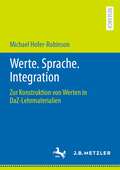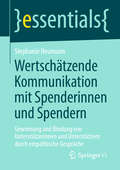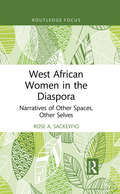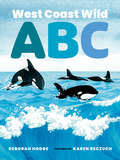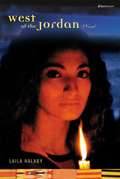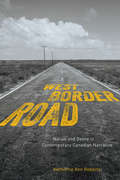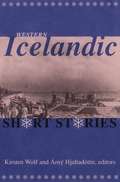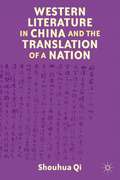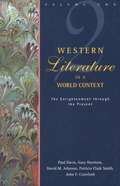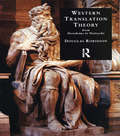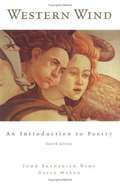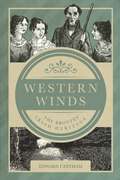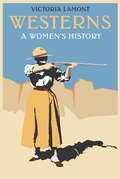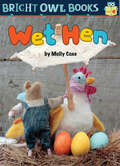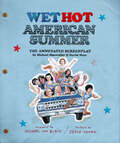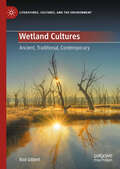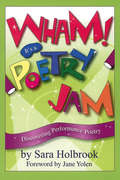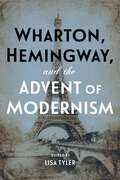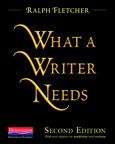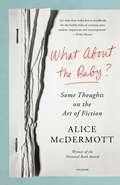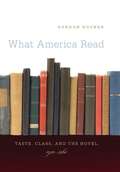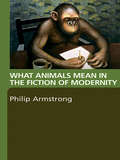- Table View
- List View
Werte. Sprache. Integration: Zur Konstruktion von Werten in DaZ-Lehrmaterialien
by Michael Hofer-RobinsonMit dem neuen Integrationsgesetz 2017 wurden Werte verpflichtender Bestandteil von Integrationskursmaßnahmen in Österreich. In dieser Studie werden Lehrbücher untersucht, die vom Österreichischen Integrationsfonds (ÖIF) für den Einsatz in ,Deutschkursen mit Werte- und Orientierungswissen‘ empfohlen werden. Es werden Möglichkeiten und Perspektiven betrachtet, die das didaktische Material eröffnet und danach gefragt, wie Werte in den Materialien konstruiert werden, wie Lernende (und Lehrende) durch Lehrmaterialien adressiert werden (können), welche Vorstellungen von gesellschaftlicher Wirklichkeit und Subjekten rekonstruierbar sind und welche gesellschaftliche Positionen Lernenden gegenüber angeregt werden. Bei der Analyse wird eine migrationspädagogisch, rassismuskritisch und subjektivierungstheoretisch informierte Perspektive eingenommen und mit dem Ansatz der Thematischen Diskursanalyse verschränkt, um das Wissen aus den Werte-Materialien zu rekonstruieren. Auf der Grundlage der theoretischen und methodischen Vorannahmen werden Lehrbücher von drei Verlagen analysiert und anhand dieser Rekonstruktionen typischer Adressierungen und Konstruktionen von Wirklichkeit dargestellt.
Wertschätzende Kommunikation mit Spenderinnen und Spendern: Gewinnung und Bindung von Unterstützerinnen und Unterstützern durch empathische Gespräche (essentials)
by Stephanie NeumannJe detaillierter eine Organisation die Motive ihrer Unterstützerinnen und Unterstützer kennt, desto besser kann sie sie langfristig binden. Dabei ist es wichtig zu verstehen, dass Zuhören nicht gleich Zustimmen ist. Stephanie Neumann beschreibt in diesem essential die von Marshall Rosenberg entwickelte Methode der „Gewaltfreien Kommunikation“ (GFK) – ein Handlungskonzept, in dem es darum geht, die Gefühle und Bedürfnisse der Gesprächspartnerin oder des Gesprächspartners zu verstehen, damit Vertrauen entstehen kann. Dies ist in der Kommunikation mit Spenderinnen und Spendern eine Grundvoraussetzung, da eine Organisation nur mit deren Unterstützung existieren kann. Wenn die Mitarbeitenden der Organisation verstehen, was ihre Spenderinnen und Spender bewegt, werden sie erfolgreich Mittel generieren.
West African Women in the Diaspora: Narratives of Other Spaces, Other Selves (Routledge African Diaspora Literary and Cultural Studies)
by Rose A. SackeyfioThis book examines fictional works by women authors who have left their homes in West Africa and now live as members of the diaspora. In recent years a compelling array of critically acclaimed fiction by women in the West African diaspora has shifted the direction of the African novel away from post-colonial themes of nationhood, decolonization and cultural authenticity, and towards explorations of the fluid and shifting constructions of identity in transnational spaces. Drawing on works by Chimamanda Ngozi Adichie, Buchi Emecheta, Ama Ata Aidoo, Sefi Atta, Chika Unigwe and Taiye Selasie, this book interrogates the ways in which African diaspora women’s fiction portrays the realities of otherness, hybridity and marginalized existence of female subjects beyond Africa’s borders. Overall, the book demonstrates that life in the diaspora is an uncharted journey of expanded opportunities along with paradoxical realities of otherness. Providing a vivid and composite portrait of African women’s experiences in the diasporic landscape, this book will be of interest to researchers of migration and diaspora topics, and African, women’s and world literature.
West Coast Wild ABC (West Coast Wild #3)
by Deborah HodgeExplore the wild and wonderful Pacific west coast from A to Z! Bears amble, cougars prowl and eagles nest in this beautiful nature alphabet book celebrating the Pacific west coast. Babies and toddlers will delight in the gorgeous watercolor illustrations and fascinating creatures that inhabit the ancient rainforest, rugged beach and majestic Pacific Ocean. Large upper and lowercase alphabet letters on each page encourage letter recognition. Key Text Features illustrations
West from Home: The Letters of Laura Ingalls Wilder, San Francisco, 1915 (Little House #11)
by Laura Ingalls Wilder Roger Lea MacbrideLaura Ingalls Wilder described her 1915 voyage to San Francisco to visit her daughter, Rose Lane. Laura's husband, Almanzo, was unable to leave their Missouri farm and these are her faithful letters home, vividly describing every detail of her journey.
West of the Jordan
by Laila HalabyA poignant novel of four Arab women; the first Bluestreak original. This is a brilliant and revelatory first novel by a woman who is both an Arab and an American, who speaks with both voices and understands both worlds. Through the narratives of four cousins at the brink of maturity, Laila Halaby immerses her readers in the lives, friendships, and loves of girls struggling with national, ethnic, and sexual identities. <p><p> Mawal is the stable one, living steeped in the security of Palestinian traditions in the West Bank. Hala is torn between two worlds--in love in Jordan, drawn back to the world she has come to love in Arizona. Khadija is terrified by the sexual freedom of her American friends, but scarred, both literally and figuratively, by her father's abusive behavior. Soraya is lost in trying to forge an acceptable life in a foreign yet familiar land, in love with her own uncle, and unable to navigate the fast culture of California youth. <p> Interweaving their stories, allowing us to see each cousin from multiple points of view, Halaby creates a compelling and entirely original story, a window into the rich and complicated Arab world.
West of the West: Dreamers, Believers, Builders, and Killers in the Golden State
by Mark AraxTeddy Roosevelt once exclaimed, "When I am in California, I am not in the West. I am west of the West," and in this book, Mark Arax spends four years travelling up and down the Golden State to explore its singular place in the world. This is California beyond the clichés. This is California as only a native son, deep in the dust, could draw it.Compelling, lyrical, and ominous, his new collection finds a different drama rising out of each confounding landscape. "The Summer of the Death of Hilario Guzman" has been praised as a "stunningly intimate" portrait of one immigrant family from Oaxaca, through harrowing border crossings and brutal raisin harvests. Down the road in the "Home Front," right-wing Christians and Jews form a strange pact that tries to silence debate on the War on Terror, and a conflicted father loses not one but two sons in Iraq. "The Last Okie in Lamont," the inspiration for the town in the Grapes of Wrath, has but one Okie left, who tells Arax his life story as he drives to a funeral to bury one more Dust Bowl migrant. "The Highlands of Humboldt" is a journey to marijuana growing capital of the U.S., where the old hippies are battling the new hippies over "pollution pot" and the local bank collects a mountain of cash each day, much of it redolent of cannabis. Arax pieces together the murder-suicide at the heart of a rotisserie chicken empire in "The Legend of Zankou," a story included in the Best American Crime Reporting 2009. And, in the end, he provides a moving epilogue to the murder of his own father, a crime in the California heartland finally solved after thirty years.In the finest tradition of Joan Didion, Arax combines journalism, essay, and memoir to capture social upheaval as well as the sense of being rooted in a community. Piece by piece, the stories become a whole, a stunning panorama of California, and America, in a new century.
West/Border/Road: Nation and Genre in Contemporary Canadian Narrative
by Katherine Ann RobertsThe North American entertainment industry is rapidly consolidating, and new modes of technological delivery challenge Canadian content regulations. An understanding of how Canadian culture negotiates its rapport with American genres has never been more timely. West/Border/Road offers an interdisciplinary analysis of contemporary Canadian manifestations of three American genres: the western, the border, and the road. It situates close readings of literary, film, and television narratives from both English Canada and Quebec within a larger context of Canadian generic borrowing and innovation. Katherine Ann Roberts calls upon canonical works in Canadian studies, theories of genre, and a wide range of scholarship from border studies, cultural studies, and film studies to examine how genre is appropriated and sometimes reworked and how these cultural narratives engage with discourses of contemporary Canadian nationhood. The author elucidates Guy Vanderhaeghe’s rewriting of the codes of the historical western to include the trauma of Aboriginal peoples, Aritha van Herk’s playful spoof on American western iconography, the politics and perils of the representation of the Canada-US border in CBC-produced crime television, and how the road genre inspires and constrains the Québécois and Canadian road movie. A reminder of the power and limitations of American genres, West/Border/Road provides a nuanced perspective on Canadian engagement with cultural forms that may be imported but never foreign.
Western Icelandic Short Stories
by Kirsten Wolf Árný HjaltadóttirThis selection of Western Icelandic writings, the first of its kind in English, represents a wide collection of first and second generation Icelandic-Canadian authors.The stories, first published between 1895 and 1930, are set mainly in North America (especially Manitoba). They reflect a weath of literary activity, from the numerous Western Icelandic newspapers and journals, to the reading circles and cultural and literary societies that supported them. The stories show a wide range of experiences and influences, including Old Norse Icelandic literature and romantic nationalism, but they also reveal the emergence of a literature that bears a unique cultural imprint.Western Icelandic Short Stories includes some of the best wirting from the period--- narrative, descriptive, comical, satirical, and serious. The stories may be read as much for enjoyment as for what they reveal about the Western Icelandic literary tradition.
Western Literature in China and the Translation of a Nation
by Shouhua QiThis book studies the reception history of Western literature in China from the 1840s to the present. Qi explores the socio-historical contexts and the contours of how Western literature was introduced, mostly through translation and assesses its transformative impact in the cultural, literary as well as sociopolitical life of modern China.
Western Literature in a World Context, Volume 2: The Enlightenment Through the Present
by David Johnson Paul Davis Gary Harrison Patricia Smith John CrawfordA two-volume anthology that places the Western literary tradition and its canon within a world context. Selections are divided into 6 major literary periods, with each period subdivided into Representative Texts, Western Texts, The World Context, and Background Texts.
Western Translation Theory from Herodotus to Nietzsche: From Herodotus to Nietzsche
by Douglas RobinsonDouglas Robinson offers the most comprehensive collection of translation theory readings available to date, from the Histories of Herodotus in the mid-fifth century before our era to the end of the nineteenth century. The result is a startling panoply of thinking about translation across the centuries, covering such topics as the best type of translator, problems of translating sacred texts, translation and language teaching, translation as rhetoric, translation and empire, and translation and gender. This pioneering anthology contains 124 texts by 90 authors, 9 of them women. Sixteen texts by 4 authors appear here for the first time in English translation; 17 texts by 9 authors appear in completely new translations. Every entry is provided with a bibliographical headnote and footnotes. Intended for classroom use in History of Translation Theory, History of Rhetoric or History of Western Thought courses, this anthology will also prove useful to scholars of translation and those interested in the intellectual history of the West.
Western Wind: An Introduction to Poetry (4th Edition)
by David Mason John Frederick NimsWESTERN WIND teaches by example and provides an outstanding collection of classic and contemporary poems. The text also includes exercises, chapter summaries, games, diagrams, illustrations, and 4-color reproductions of great works of art.
Western Winds: The Brontës' Irish Heritage
by Edward ChithamThe Irish heritage of the Brontë family has long been overlooked, partly because both Charlotte and her father Patrick did their very best to ensure that this was the case and partly because there was a strong understanding at the end of the nineteenth century that the Brontës were Yorkshire regional novelists. Yet their ideas and attitudes, and perhaps even their storylines, can be traced to Ireland. This book, which develops ideas originally published in The Brontës’ Irish Heritage in 1986, sets the record straight. By re-evaluating the sources available, it traces Patrick’s Irish ancestry and shows how it prevented him from achieving his ambitions; it shows how that heritage influenced his children’s writings, particularly Emily; and it sheds further light on the genesis of Wuthering Heights.
Westerns: A Women's History (Postwestern Horizons)
by Victoria LamontAt every turn in the development of what we now know as the western, women writers have been instrumental in its formation. Yet the myth that the western is male-authored persists. Westerns: A Women’s History debunks this myth once and for all by recovering the women writers of popular westerns who were active during the late nineteenth and early twentieth centuries when the western genre as we now know it emerged. Victoria Lamont offers detailed studies of some of the many women who helped shape the western. Their novels bear the classic hallmarks of the western—cowboys, schoolmarms, gun violence, lynchings, cattle branding—while also placing female characters at the center of their western adventures and improvising with western conventions in surprising and ingenious ways. In Emma Ghent Curtis’s The Administratrix a widow disguises herself as a cowboy and infiltrates the cowboy gang responsible for lynching her husband. Muriel Newhall’s pulp serial character, Sheriff Minnie, comes to the rescue of a steady stream of defenseless female victims. B. M. Bower, Katharine Newlin Burt, and Frances McElrath use cattle branding as a metaphor for their feminist critiques of patriarchy. In addition to recovering the work of these and other women authors of popular westerns, Lamont uses original archival analysis of the western-fiction publishing scene to overturn the long-standing myth of the western as a male-dominated genre.
Wet Hen (Bright Owl Books)
by Molly CoxeHen and her eggs are wet. Luckily her friend Ben is there to help! This fun photographic easy-to-read story features the short"e" vowel sound. Kane Press's new series of super simple easy readers, Bright Owl Books, launches with Molly Coxe's five photographic stories, which feature the short vowel sounds and are each only around 100 words. These irresistibly silly stories help kids learn to read through repetition and by teaching the basic building blocks of reading—vowel sounds—giving kids the perfect start on educational success.
Wet Hot American Summer: The Annotated Screenplay
by Michael Showalter David WainThe screenwriters behind the cult classic comedy present the definitive behind-the-scenes companion volume.With its unbelievable ensemble cast, Wet Hot American Summer hilariously skewered 1980s teen comedies while becoming a beloved classic in its own right. Now screenwriters David Wain and Michael Showalter have created a behind-the-scenes annotated version of the original screenplay that launched a thousand Halloween costumes. They provide commentary on how and why they made the artistic decisions they did while writing and filming the movie, as well as the Netflix series that came after. The book also features reproduced ephemera from filming—photos, original (and scathing) reviews, AIM chat conversations, marked up script pages, and so much more. Written and curated by Wain and Showalter, this is the must-have guide to all things Wet Hot.
Wetland Cultures: Ancient, Traditional, Contemporary (Literatures, Cultures, and the Environment)
by Rod GiblettTraditional cultures have a long and vital association with wetlands as sacred places imbued with spiritual and ceremonial significance that provide physical sustenance and sources of materials in paludiculture. Ancient Greek and Roman cultures denigrated wetlands as places of disease, terror, horror, the hellish and the monstrous. Judeo-Christian theology was syncretized with them into the mainstream denigration of wetlands. Wetlands are a marginalized community, an oppressed minority and non-binary, queer bodies of water.
Wham! It's a Poetry Jam: Discovering Performance Poetry
by Sara HolbrookTake a wild ride with poet Sara Holbrook as she guides young writers in performing their poetry with style and pizzazz. With enthusiasm and a touch of irreverence, Ms. Holbrook, a performance poet herself, explains how to use voice, rhythm, attitude, movement, and other techniques to perform poetry in a group, duo, or solo. More than thirty poems are included for young readers to practice, as well as instructions for putting on a poetry jam at school or in the community.
Wharton, Hemingway, and the Advent of Modernism
by Linda Wagner-Martin Anna Green Jennifer Haytock Sirpa Salenius Lisa Tyler Reader in American Literature Laura Rattray Parley Ann Boswell Dustin Faulstick Peter Hays Caroline Hellman Ellen Andrews Knodt Cecilia Macheski Milena RadevaWharton, Hemingway, and the Advent of Modernism is the first book to examine the connections linking two major American writers of the twentieth century, Edith Wharton and Ernest Hemingway. In twelve critical essays, accompanied by a foreword from Wharton scholar Laura Rattray and a critical introduction by volume editor Lisa Tyler, contributors reveal the writers’ overlapping contexts, interests, and aesthetic techniques. Thematic sections highlight modernist trends found in each author’s works. To begin, Peter Hays and Ellen Andrews Knodt argue for reading Wharton as a modernist writer, noting how her works feature characteristics that critics customarily credit to a younger generation of writers, including Hemingway. Since Wharton and Hemingway each volunteered for humanitarian medical service in World War I, then drew upon their experiences in subsequent literary works, Jennifer Haytock and Milena Radeva-Costello analyze their powerful perspectives on the cataclysmic conflict traditionally viewed as marking the advent of modernism in literature. In turn, Cecilia Macheski and Sirpa Salenius consider the authors’ passionate representations of Italy, informed by personal sojourns there, in which they observed its beautiful landscapes and culture, its liberating contrast with the United States, and its period of fascist politics. Linda Wagner-Martin, Lisa Tyler, and Anna Green focus on the complicated gender politics embedded in the works of Wharton and Hemingway, as evidenced in their ideas about female agency, sexual liberation, architecture, and modes of transportation. In the collection’s final section, Dustin Faulstick, Caroline Chamberlin Hellman, and Parley Ann Boswell address suggestive intertextualities between the two authors with respect to the biblical book of Ecclesiastes, their serialized publications in Scribner’s Magazine, and their affinities with the literary and cinematic tradition of noir. Together, the essays in this engaging collection prove that comparative studies of Wharton and Hemingway open new avenues for understanding the pivotal aesthetic and cultural movements central to the development of American literary modernism.
What A Writer Needs, Second Edition
by Ralph FletcherFor more than 20 years, Ralph Fletcher's What a Writer Needs has been a beloved bestseller, trusted in classrooms, district inservices, and teacher-preparation programs across the U. S. Now Ralph's second edition makes What a Writer Needs an even more powerful tool for turning students into writers-and for teachers to improve their own writing. In What A Writer Needs, Ralph presents a crash course on the elements of writing, with chapters on how to create vivid details, compelling voice, a sense of place, believable characters, tension, engaging leads and endings, just to name a few. Readers will develop a deeper, more profound knowledge of writing and will find the book eminently practical as well. In fact, Ralph has added two entirely new chapters on revision and nonfiction writing that are immediately useful for meeting Common Core writing standards. It also includes a completely updated list of suggested mentor texts, handpicked by Ralph, and sorted by the craft element each demonstrates. What A Writer Needs, Second Edition, is a desert-island book for any writing teacher. Personal and anecdotal, it includes a wealth of lively writing samples drawn both from student writers and professionals. Experience Ralph's keen instructional insight, his careful attention to students and their work, and his experienced-honed wisdom about the essentials of great writing. Discover the pleasure of reading and teaching from What a Writer Needs. You'll soon find out why Ralph Fletcher's timeless classic is more timely than ever.
What About the Baby?: Some Thoughts on the Art of Fiction
by Alice McDermottA collection of essays, lectures, and observations on the art of writing fiction from Alice McDermott, winner of the National Book Award and unmatched "virtuoso of language and image" (Rebecca Steinitz, The Boston Globe)What About the Baby? Some Thoughts on the Art of Fiction gathers the bestselling novelist Alice McDermott’s pithiest wisdom about her chosen art, acquired over a lifetime as an acclaimed writer and teacher of writing.From technical advice (“check that your verbs aren’t burdened by unnecessary hads and woulds”) to setting the bar (“I expect the fiction I read to carry with it the conviction that it is written with no other incentive than that it must be written”), from the demands of readers (“they’d been given a story with a baby in it, and they damn well wanted that baby accounted for”) to the foibles of public life (“I’ve never subscribed to the notion that a film adaptation is the final imprimatur for a work of fiction, despite how often I’ve been told by encouraging friends and strangers, ‘Maybe they’ll make a movie of your novel,’ as if I’d been aiming for a screenplay all along but somehow missed the mark and wrote a novel by mistake”), McDermott muses trenchantly and delightfully about the craft of fiction.She also serves throughout as the artful conductor of a literary chorus, quoting generously from the work of other great writers (including Tolstoy, Shakespeare, Nabokov, Morrison, and Woolf ), beautifully joining her voice with theirs. These stories of lessons learned and books read, and of the terrors and the joys of what she calls “this mad pursuit,” form a rich and valuable sourcebook for readers and writers alike: a deeply charming meditation on the unique gift that is literature.
What America Read
by Gordon HutnerDespite the vigorous study of modern American fiction, today's readers are only familiar with a partial shelf of a vast library. Gordon Hutner describes the distorted, canonized history of the twentieth-century American novel as a record of modern classics insufficiently appreciated in their day but recuperated by scholars in order to shape the grand tradition of Hemingway, Fitzgerald, and Faulkner. In presenting literary history this way, Hutner argues, scholars have forgotten a rich treasury of realist novels that recount the story of the American middle-class's confrontation with modernity. Reading these novels now offers an extraordinary opportunity to witness debates about what kind of nation America would become and what place its newly dominant middle class would have--and, Hutner suggests, should also lead us to wonder how our own contemporary novels will be remembered.
What Animals Mean in the Fiction of Modernity
by Philip ArmstrongWhat Animals Mean in the Fiction of Modernity argues that nonhuman animals, and stories about them, have always been closely bound up with the conceptual and material work of modernity. In the first half of the book, Philip Armstrong examines the function of animals and animal representations in four classic narratives: Robinson Crusoe, Gulliver’s Travels, Frankenstein and Moby-Dick. He then goes on to explore how these stories have been re-worked, in ways that reflect shifting social and environmental forces, by later novelists, including H.G. Wells, Upton Sinclair, D.H. Lawrence, Ernest Hemingway, Franz Kafka, Brigid Brophy, Bernard Malamud, Timothy Findley, Will Self, Margaret Atwood, Yann Martel and J.M. Coetzee. What Animals Mean in the Fiction of Modernity also introduces readers to new developments in the study of human-animal relations. It does so by attending both to the significance of animals to humans, and to animals’ own purposes or designs; to what animals mean to us, and to what they mean to do, and how they mean to live.
